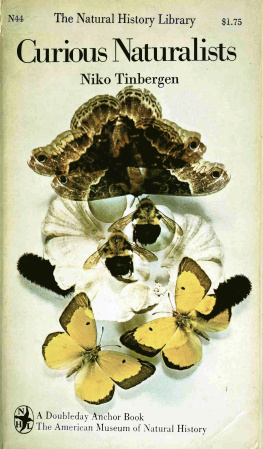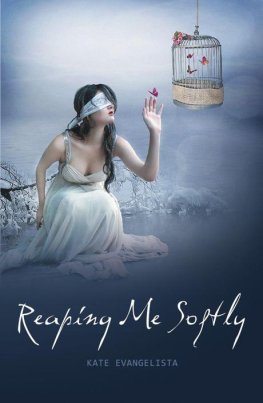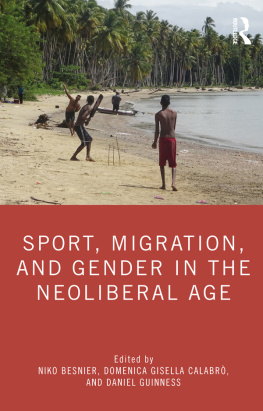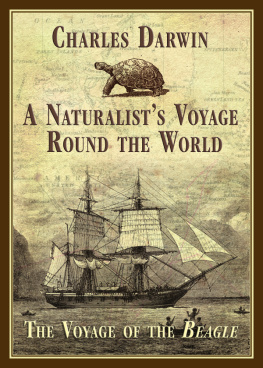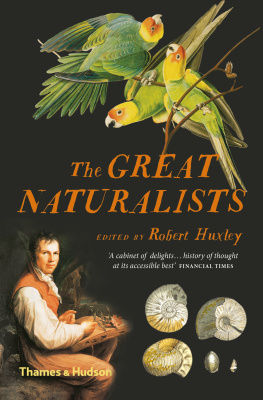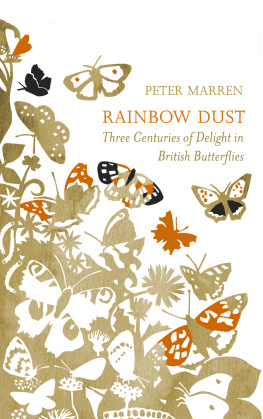niko tinbergen, a native of the Netherlands, taught at the University of Leiden, at Yale and Columbia, and since World War II has been at Oxford University as university lecturer in animal behavior. He has long worked closely with the noted student of animal behavior, Konrad Lorenz. Dr. Tinbergen is the author of The Herring Gulls World, The Study of Instinct, and a number of other writings in this field.
Curious Naturalists was originally published in this country by Basic Books, Inc. in 1958. The Natural History Library edition is published by arrangement with Basic Books, Inc.
Natural History Library edition: 1968
Copyright 1958 by Niko Tinbergen
Printed in the United States of America
All Rights Reserved
PREFACE
This book describes the activities and some of the discoveries of a small number of naturalists who have joined me, at one time or another, in the pursuit of our common hobby: the study of the behaviour of animals in their natural environment. It covers about 25 years of biological sightseeing and exploration and tries to tell, without the use of technical language, a story of our field work and of the joys of discovery.
To publish or not to publish has long been my dilemma. One likes to tell others about enjoyable experiences, but it is easy to become a bore. Would it not be too presumptuous to think that these stories would interest any readers except those as obsessed as myself? Perhaps it is, but then there are many such readers. I know only too well that many of my fellow-men are also naturalists and treasure-hunters at heart, and often feel an urge to break out for a while and live a little closer to Nature. Perhaps, since I have been more fortunate than most in being able to fulfil that urge, my stories might encourage such people to do as I did; I can assure them that it has always been fun.
I even have the temerity to believe that my book might perhaps help in recruiting more young naturalists to biology. Increasingly exact and specialized research is being done nowadays, yet some fields of biology seem [Page viii] sometimes to lose touch with biologys original objectliving things in their natural surroundings. Perhaps books such as this might show budding naturalists with inquiring minds that they can still play a part in biology. If so, a little note of warning might not be amiss: new recruits will have to be more systematic and more thorough than I have been. This, however, need not discourage them; even consistency and thoroughness, if not reduced to obsessions, can be fun.
ACKNOWLEDGMENTS
I would like on this occasion to express my gratitude to three friends who initiated me in the study of animal behaviour: Dr A. Schierbeek, the late G. J. Tijmstra, and Dr Jan Verwey. I further owe much to the friendship and co-operation of my co-workers, whose names are mentioned in the main text.
For permission to use Figs. 1,3, and 13 I am indebted to the Clarendon Press, Oxford; Professor G. P. Baerends kindly allowed me to use Figs. 10,11 and 12; for advice on Fig. 2. I am indebted to Dr E. Cullen; and Figs. 23,24 and 25 are reproduced with permission of Dr A. Manning and Messrs E. J. Brill, Leiden.
The photographs are my own, except Nos. 4 (W. Kruyt); 12 (G. P. Baerends); 14 (J. P. Strijbos); 25 (M. Lyster); and 46 (J. M. Cullen). Professor Baerends kindly read Chapter 6, and Dr J. M. Cullen read the entire manuscript and gave me the benefit of his criticism.
N. T.
CONTENTS
CHAPTER ONE
THE BEE-HUNTERS OF HULSHORST
As a child I thoroughly disliked insects and always suspected that, apart from crawling over ones skin, they all might bite or sting. Later, however, I spent many summers studying the habits of one of the fiercest of digger wasps, Philanthus, the bee-killer, and gradually I grew very fond of this insect and of many others. I owe this interest to the lovely country of Hulshorst.
In my early twenties, when I had been a zoology student for several years, I still showed a certain preoccupation with hockey, pole-jumping, skating, camping and bird-photography. My zoology professor did not altogether approve of this; in fact, he had given me up as an incipient zoologist, and I cannot altogether blame him. Yet I was a budding naturalistof a kindand without being aware of it I was waiting for the critical stimulus that would start me on what was to become my hobby and my job.
The summer vacation usually found my parents, with all their children and many friends, in occupation of a small cottage in one of the less densely populated areas of crowded little Holland, amid wide expanses of glacial sands which, fortunately enough, were good for nothing except, on the best parts, growing low-quality timber. Some irregular strips of fine deciduous trees such as Beech and Oak bordered a brook that wound its way [Page 2] through the heaths and sand dunes on its way to the Zuiderzee. Several square miles of the hilly sands had been planted with Scots Pine, but large stretches were covered with a carpet of Heather, and other parts again were just bare sand of the poorest sort. Isolated windblown Pines, and little dunes with a sparse vegetation of Marram Grass, broke the monotony of these arid plains.
But dont think that this country was dullfar from it! On countless long walks, at first in the summer, later in all seasons of the year, we discovered its many hidden treasures. The cool green Beech wood bordering the brook harboured such fine birds as Black Woodpeckers, Honey Buzzards and Woodcock. Quietly following the little stream, we often surprised Roedeer nibbling at fresh green shoots, or drinking in a quiet comer. In the autumn, when the fallen Beech leaves glowed like polished copper, we were delighted to find the most wonderful mushrooms; collecting the edible species gave a culinary value to our leisurely walks, and made us sympathize with the Red Squirrels who were busy nibbling at acorns or burying them.
The Scots Pine plantations, at first glance so monotonous, were full of fascinating creatures, many of them beautifully camouflaged. The larvae of the Pine Hawk Moths and several other caterpillars were living among the needles, eating away steadily, blending with their background through their wonderful pattern of green and white stripes. In the poorer parts of the woods, where the trunks were covered with lichens, a peculiar fauna of spiders, bugs and moths was found, all matching their background by their remarkably efficient colour patterns of a pale lichen green covered with black blotches.
On the greenish grey carpet of reindeer moss, soft as velvet or crisp as toast, according to the weather, the [Page 3] lovely orange-ochre Chanterelles glowed all through the summer and autumnand they supplied us with many a good meal.
Flocks of tits travelled through the tops of the trees, continually whispering to keep in touch with each other. Their whispers stopped only when a sharp zee of one of them warned them of an attacking Sparrow Hawk. These, us well as their bigger cousins, the Goshawks, could be found nesting in the older parts of the woods.
One dramatic winter day found us walking through these woods during a fierce blizzard. Starting as rain, then turning to sleet, then, with dropping temperature, into dry snow, huge masses of moisture were hurled down on the wood, stuck to the needles and the twigs, and finally, through their accumulated weight, began to break even the strongest branches. Above the roar of the gale, the cracking and snapping of the overloaded branches rang through the woods like so many rifle shots. Looking at this, not with the eyes of a forester but with those of the naturalist, we thought ourselves fortunate in witnessing one of those rare, critical days, so interesting to the ecologist because they may well have tremendous consequences for wild life.
Next page
